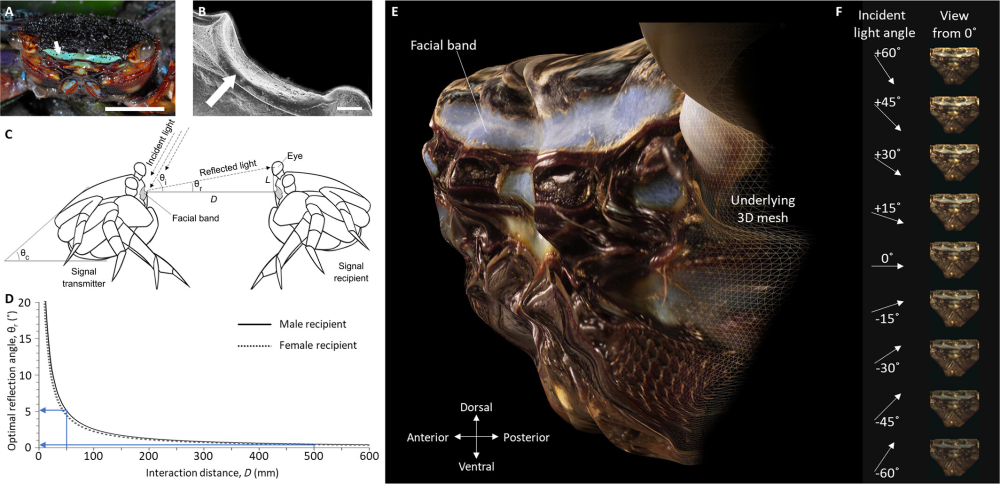In the mangroves of Singapore lives a very fancy crab. The face-banded crab, Parasesarma eumolpe, is a lot to take in with colors galore, but now scientists have made an incredible discovery about how some of this coloration helps them to communicate. You see, they’ve been firing off light signals with what are, essentially, fancy eyebrows (or a moustache, it’s a close call between the two on a crab face).
Colors are a key ingredient to animal communication. We see examples of visual signaling in everything from camouflage, to sexual selection, and aposematism, in which animals advertise their toxicity or yucky taste by wearing vibrant colors.
As such, if an animal boasts any physical features that really seem to stand out, scientists are eager to know two things: what are they saying, and how are they saying it?
That’s what happened to a team conducting multiple mangrove fieldtrips in Singapore. They found themselves blown away by the pigmented facial bands of these crabs and how brightly they showed up even to their eyes.
Previous research had already revealed a few interesting things about these face bands. For instance, there are sex differences, such as the males reflecting more blue than the females. The pigments are linked to the crabs’ diet (which is rich in carotenoids), and become faded when they are starving. This is interesting, because it could be a cue of a crab’s present health – useful information if you’re looking for a mate or sizing up a competitor.

The signalling behavior of Parasesarma eumolpe crabs. Scanning electron micrograph image of the cross section of a facial band (indicated by the white arrow) reveals its concave macrostructure (and lack of microstructure).
“However, this past research did not explain the anatomical basis of the exceptional facial band brightness we saw in the field,” wrote the authors of a new paper about face-banded crabs. “Understanding the mechanism of this brightness, potentially micro- or macro-morphological features, could help in determining the function of the crabs’ facial bands, for example, whether they are used for communication with conspecifics or otherwise, and thereby shed light on its evolution by pinpointing the trait that has presumably been selected for.”
To find out, they took some crabs to the lab and immobilized them in cold water. This meant they could hold them steady long enough to get a good look at what happened when they shone a light on their faces, especially those oh-so-intriguing bands of color.
Turns out, they put on a heck of display, firing a tightly-focused beam that would hit another crab standing between 5 and 50 centimeters (2-20 inches) away right in the eyeballs. When they tested how crabs reacted to images of other crabs, they saw they were more drawn to the crabs with the brightest bands, and colors that mirrored their own. A bit perplexing if the bands are a signal for potential mates, but it makes sense in the context of competition and rival males.
“Here, we demonstrate that the concave macrostructure of these bands acts in a manner analogous to the reflector of a headlamp, increasing their apparent brightness at the same range of angles that are optimum for signaling between two crabs,” wrote the authors. “Scanning electron microscopy indicated no iridescence or structural coloration. These facial bands are, to our knowledge, the first example of light-focusing, external, macro signaling structures in animals.”
Using light in this way is something we see in cats and crocodiles, but their reflective surfaces are inside the body in their eyes. It appears these crabs are unique in wearing their reflective bands on their faces, though their may be other fancy brows/tashes out there in nature that we just don’t know about yet.
The study is published in the journal Ecology.
Source Link: Fancy Crab Becomes The First Known Animal To Wear “Nature’s Headlamps” On Its Face